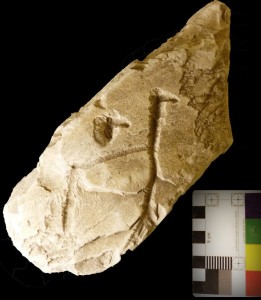 The ‘Ruins’ chapter from The Old Weird Albion follows a walk through Balsdean, a lost hamlet hidden among the Downs north of Rottingdean and Woodingdean; a conjuring walk, in which the memories of others flood and recede from the walker’s own, leaving fertile ground in their wake. The walk was created by Grasscut, a pair of Brighton-based artists/musicians who, through their work 1 Inch 1/2 Mile, have made one of the great walking artworks present in the British countryside.
The ‘Ruins’ chapter from The Old Weird Albion follows a walk through Balsdean, a lost hamlet hidden among the Downs north of Rottingdean and Woodingdean; a conjuring walk, in which the memories of others flood and recede from the walker’s own, leaving fertile ground in their wake. The walk was created by Grasscut, a pair of Brighton-based artists/musicians who, through their work 1 Inch 1/2 Mile, have made one of the great walking artworks present in the British countryside.
Balsdean has been considered haunted for generations – it has been peeled away from existence as an inhabited place since the 18th-century and long before, from thriving agricultural village to a place difficult to find in person, nonetheless on a map. Now it is little more than a cluster of once-buildings, an engraved stone, a few poems, a feeling – a chill and a whisper. This is what Grasscut evokes on their album, created to be listened to on a tour-guided walk through the dene. 1 Inch nods to the landscape through which you walk – ‘The Tin Man’ at an oft-creaky gate, ‘Meltwater’ from above a valley-floor field that shimmers in the morning sun, the grandiose ‘In Her Pride’ as you ascend out of the valley back to the real world. But it never falls into descriptive traps: its conjuring is of pure memory. Through samples of Pound and Belloc, of Sebald and John McCormack, as well as recordings of the artists’ relations and random encounters, it plays with ideas of nostalgia, of the things done in the name of memory, of the power of remembering and of forgetting and of the ‘quick eyes gone under earth’s lid / for two tons of broken statues / for a few thousand battered books’ – more skeletons than still exist of Balsdean.
Grasscut offers their music, a map, and a starting point via their site. I followed this beginning at dawn on an early-Spring day and its birds above the radio tower (‘High Down’), its attitudinal shift as I passed through into the flat of the dene and into the ruins of the dwellings (‘1946’), the final navigation and feverish climb out of Balsdean (‘shake a sheet of green on me’) – it was part of an awakening to a different way of using the landscape to remember. Not to remember things, events, even people, but to remember memory itself, and its disintegration – like Sebald on Woolf, as sampled by Grasscut:
… the wonderful example of her description of a moth coming to its end on a windowpane somewhere in Sussex, and this is a passage of some two pages only, I think. And it’s written somewhere, chronologically speaking, between the battlefields of the Somme and the concentration camps erected by my compatriots. There is no reference made to the battlefields of the Somme in this passage, but one knows as a reader of Virginia Woolf that she was greatly perturbed by the First World War, by its aftermath, by the damage it did to people’s souls—the souls of those who got away and, naturally, of those who perished. I think that a subject which at first glance seems quite far removed from the undeclared concern of a book can encapsulate that concern.
1 Inch 1/2 Mile is about landscape, it is about memory, but more than these it is about a nod to the power and danger of remembering and forgetting; it is about erasure and reassembly: it is about accessing, within a place, a new understanding of what it is to forge memory from the acts of knowing, learning and forgetting.

 The 2010 crop-circle season opened last week with a military-badge-like piece near Old Sarum, and a piece just this past weekend about as close to Stonehenge as the makers might get. Obviously, that has sent many’s a heart a flitter, and the talk of ley-line connections between the two, etc., has already begun in earnest.
The 2010 crop-circle season opened last week with a military-badge-like piece near Old Sarum, and a piece just this past weekend about as close to Stonehenge as the makers might get. Obviously, that has sent many’s a heart a flitter, and the talk of ley-line connections between the two, etc., has already begun in earnest.  The
The  The
The